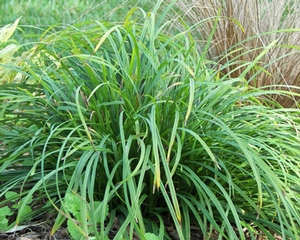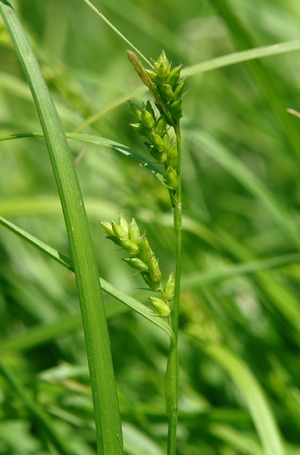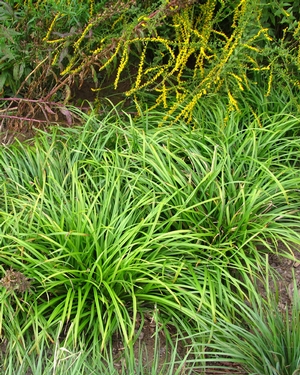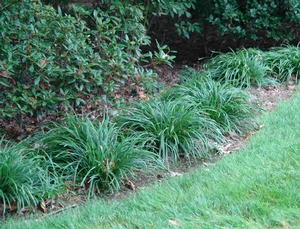Carex amphibola
Common: creek sedgeCarex amphibola LP32 - 32 per flat
- Height: 8"-12"
- Spread: 8"-12"
- Spacing: 12"
- Hardiness Zone(s): 3-9


Carex amphibola LP32 - 32 per flat



Carex amphibola is a widely adaptable native sedge naturally occurring from Texas to Quebec and Georgia to New Hampshire. Its forms a compact and semi-erect mound. Proven to be semi evergreen (zone 6b) and prefers deciduous shade in upland or even floodplain conditions; easily adapts to fine or medium textured soils. Creek sedge lends itself well to native shade gardens, along wood paths or as a slope stabilizer. It is a vigorous clump former with shiny, narrow green foliage 1/8" wide by up to 12" long. C. amphibola is an excellent companion for Phlox divaricata, Chrysogonum and Polygonatum...among others!
Carex amphibola is widely adaptable native sedge naturally occurring from Texas to Quebec and Georgia to New Hampshire. It forms a compact and semi-erect mound. Proven to be semi evergreen in zone 6b. It is a vigorous clump former with shiny, narrow green foliage 1/8" wide by up to 12" long. A long-lived perennial sedge, it is a fantastic native substitute for Liriope.
Carex amphibola prefers deciduous shade in upland or even floodplain conditions and easily adapts to fine or medium textured soils. It tolerates full sun to full shade conditions but will need additional irrigation during the hot months of summer.
We use creek sedge in our shade gardens, along wood paths or as a slope stabilizer. Deer resistant and a host to some Lepidoptera larvae, this plant fulfills many functions in the landscape.